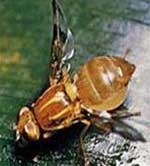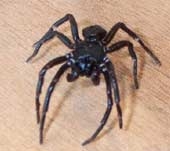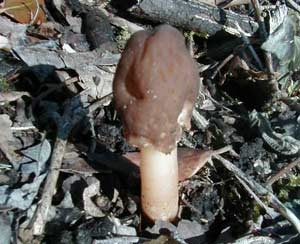In the past, we have witnessed numerous ecological disasters when an invasive species is introduced into an area without its natural predators. These species can proliferate explosively and decimate a range of native organisms.
In 2018, China faced a cicada outbreak, while in Japan, the invasive scale insect devastated numerous cherry trees. In Australia, a solitary feral cat can massacre an entire flock of seabirds, while the country is home to up to 2 million stray cats.
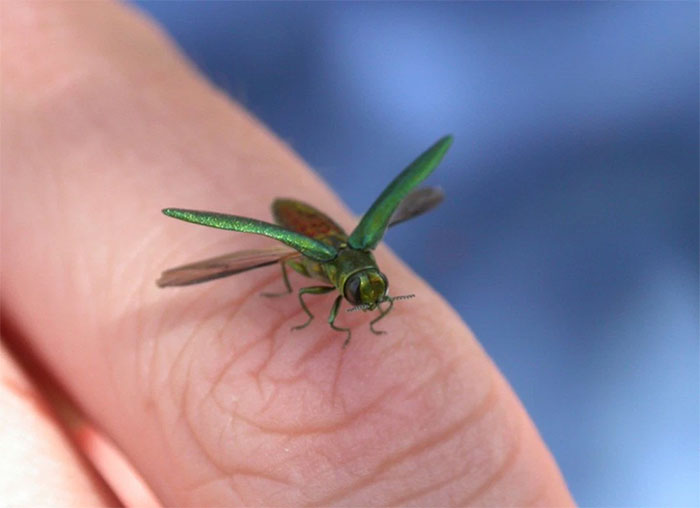
Emerald Ash Borer.
Most recently, a small and beautiful insect native to Northeast Asia has found its way to the United States and Europe. There, it has caused a horrific nightmare for the ash tree, a symbol of many cities and rural areas in the West.
This is the story of the westward expansion of the Emerald Ash Borer
What we know about this killer organism dates back to 1860, when a French priest and naturalist, Armand David, discovered it in Beijing, China.
He brought this emerald-colored larva back to France, where an entomologist named Léon Fairmare wrote the first brief descriptions of it, published in the journal Revue d’Entomologie in 1888.
It is a beetle with a metallic green color, approximately 8.5 mm long and 1.6 mm wide. Scientists assigned it the scientific name Agrilus planipennis. However, due to its distinctive appearance, this species is commonly referred to as the Emerald Ash Borer or simply the borer.
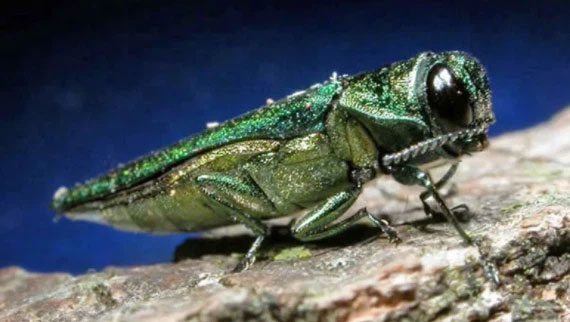
The Emerald Ash Borer is native to Northeast Asia, including parts of Russia, Mongolia, China, Japan, and Korea. They specifically bore into and feed on the leaves of ash trees.
When female emerald ash borers lay their eggs on the bark of ash trees, their eggs develop into larvae, with a life cycle of up to 500 days. During this time, the emerald ash borer larvae bore deep into the ash tree trunk, creating galleries that obstruct water and nutrients from moving up from the roots to nourish the tree. The ash tree eventually drops its leaves, dies, and decays.
Over millions of years of evolution, native ash species have developed various forms of resistance to this pest, including secreting chemicals like tannins to repel them. The Northeast Asian region is also home to numerous natural enemies that kill emerald ash borers, particularly a species of Asian wasp that parasitizes the borer, killing it from the inside.
With these delicate balances of nature, the native emerald ash borer populations cannot thrive, and the ash populations in those countries remain protected. The trouble only begins when the emerald ash borer finds its way westward to the United States and European countries.
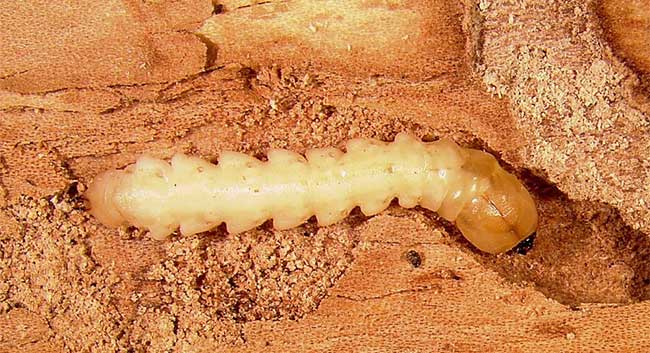
Emerald Ash Borer larvae.
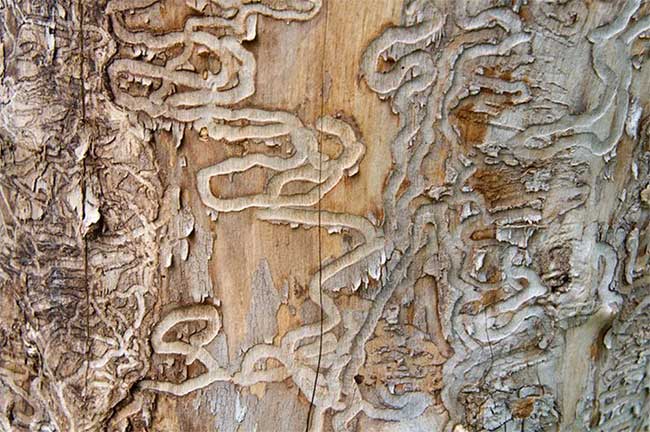
They specifically bore into and feed on the leaves of ash trees.
In 2003, a population of emerald ash borers was found in Moscow. From 2003 to 2016, this pest continuously spread westward into European Union countries at a rate of 40 km per year. By 2019, an emerald ash borer population had spread from Russia to Ukraine. It is expected that by 2036, this beetle will dominate central Europe.
This is a disaster, as the population of ash species in Europe is highly vulnerable to this pest. They have not developed effective resistance mechanisms against the emerald ash borer. Shortly after appearing in Denmark, the borer infected 90% of ash trees in the country. The absence of natural enemies like Asian wasps has also allowed the emerald ash borer population to thrive and cause damage.
In 2016, a study published in the journal Ecology predicted that the emerald ash borer could lead to the extinction of ash trees across Europe. Consequently, the price of ash wood is trending upward as the supply of quality wood diminishes.
The disappearance of ash trees will also impact 1,000 species of organisms within the ecosystem they support, including 12 species of birds, 55 species of mammals, and 239 species of vertebrates.
“More than 100 species of lichens, fungi, and other insects depend on ash trees and are likely to decline or go extinct if ash trees also go extinct“, said Peter Thomas, a PhD at Keele University in the UK. “The rural landscape in England will be permanently altered as a result.“
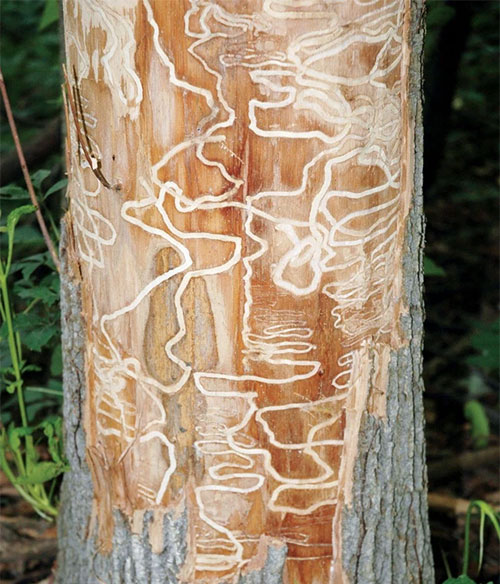
The Emerald Ash Borer could wipe out ash trees in 6,000 urban areas in the U.S.
In the U.S., ash trees are currently being planted in urban areas, contributing to the landscape and providing important thermal regulation functions for cities. However, a similar story to that in Europe is unfolding on the North American continent. Ash trees here are also at risk of extinction due to the emerald ash borer.
This insect was first officially identified in Michigan in 2002. However, U.S. scientists predict it may have entered the U.S. as early as the 1980s. Despite the geographic separation from Northeast Asia, the emerald ash borer can infiltrate the U.S. via maritime routes on cargo ships.
These ships often use ash wood for their crates. If that wood is still fresh, the emerald ash borer larvae can survive within it until they reach the U.S. Here, this insect also finds an environment devoid of natural enemies, with no Asian wasps, and the ash trees in the U.S. are entirely unresistant to the emerald ash borer.
In Europe, because the emerald ash borer moves slowly and disperses naturally, many ash species there have developed some resistance mechanisms against this insect, although not as effectively as in Northeast Asia. However, the borer’s sudden introduction to the U.S. has rendered the resistance of ash trees there nearly zero.
As a result, once again, wherever the emerald ash borer goes, the ash trees fall. Statistics show that this insect has killed millions of ash trees in the U.S. and will continue to kill 1.4 million trees in the next 30 years. This number is enough to wipe out 100% of ash trees in 6,000 urban areas in the U.S.
The hotspots include New York, Chicago, and Milwaukee, cities with many ash trees that lie on the invasion path of the emerald ash borer.
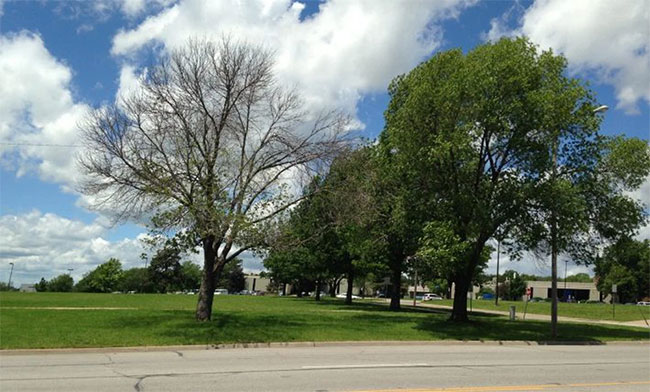
An ash tree dying on the streets of the U.S.
The damage caused by the emerald ash borer is more severe in urban areas, as those areas lack the natural enemies of the insect, such as woodpeckers. “Many urban areas only plant a single species or genus of ash, leading to the easy spread of this invasive insect“, said ecologist Frank Koch at the Southern Research Station of the U.S. Forest Service.
As ash trees fall, cities will need to replant new trees. The estimated damage this tiny beetle could cause to the U.S. could reach $30 million per year. In the worst-case scenario, that figure could rise to $4.9 billion from now until 2050.
Authorities in the U.S. are trying to find ways to eradicate the emerald ash borer, from removing infected trees and using insecticides to releasing natural enemies. However, these measures do not stop the spread but only slow the rate of emerald ash borer invasion to half that of Europe.
In the U.S., this insect continues to invade at a rate of about 20 km per year, threatening the existence of 8.7 billion ash trees across North America.
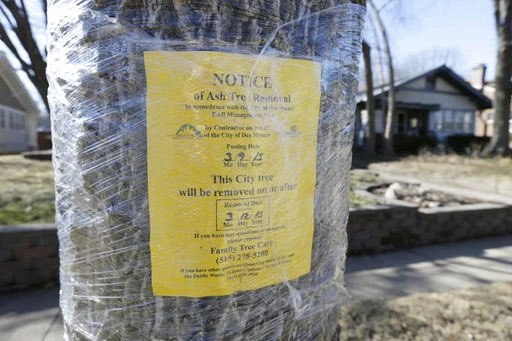
An ash tree wrapped in plastic and removed due to emerald ash borer infestation.
Ecologist Emma Hudgins at McGill University in Canada states that nonetheless, “these research results provide a cautionary tale for cities that are monoculturing a single tree species for their landscapes.”
Green spaces in urban environments provide numerous benefits, such as improving air quality, cooling streets, capturing carbon, providing habitats for wildlife, and enhancing the mental and physical health of citizens.
Therefore, the lesson learned here is that to maintain sustainable green cities, urban planners should plant a diverse range of tree species and avoid monoculturing a single species that is susceptible to pests, especially European and North American ash trees.








































